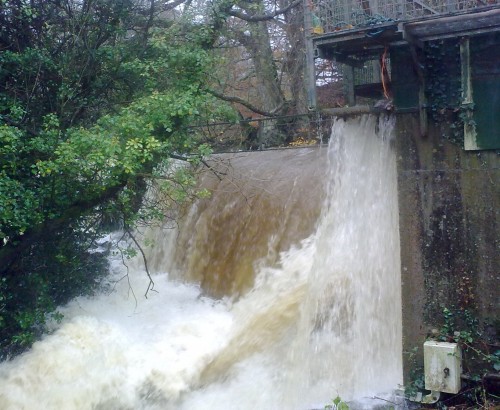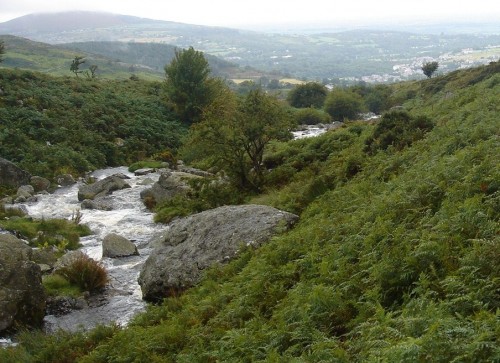
Hydropower
Hydroelectric power is the generation of electricity from the energy given up by water as it falls. So wherever there is falling water it should be possible, in theory, to generate electricity. One of our specialities is finding ways of doing this where it is difficult, which we like doing because we believe that this great green resource should be used as much as possible.
The important things are to have enough head (vertical fall) and flow (amount of water passing each second). In general, hydropower schemes are divided into “low head” where the fall might be just 2m at a weir and “high head” where water might be collected high up a hill side and diverted into a pipe down to a turbine perhaps 50 or 100m lower down. To generate the same amount of power a low head scheme needs more water, so these tend to be found on larger rivers. High head schemes might only use the water from a small stream.

Different sites need different types of turbines. For example, high head schemes will usually use pelton or turgo turbines. Francis and crossflow turbines can be used for low or medium heads. Kaplan/propeller and Archimedean screw turbines are generally most suitable for low head sites. Screw turbines have become popular recently because they are thought to make the most fish-friendly installations. However, appropriate screening and other good design practice can make other types of scheme just as safe for fish. The best choice of turbine for a given site will always depend on a lot of factors and should be made with the advice of an experienced professional.
Hydropower systems can be used in isolation from the national grid, for example to provide electricity where the only other alternative is a diesel generator. But more usually, a scheme will be set up to run alongside the national grid so that surplus power can be sold to others and so that there is a backup when there is not enough water for the turbine (in dry weather spells). Even when a hydro system is grid connected, it is still possible to use the electricity generated on site for the home or business that it is attached to.
For more information see the British Hydropower Association's guide on mini hydro: http://www.british-hydro.org/mini-hydro/
 Derwent Hydro
Derwent Hydro